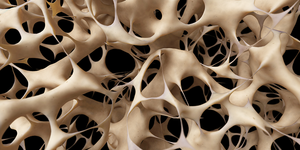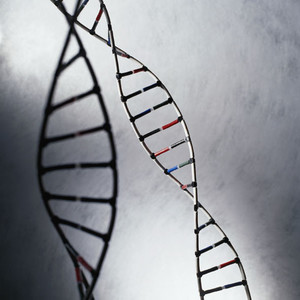Until recently, bacterially derived monoclonal antibodies (mAbs) were unable to recruit innate immune cells and were thus ineffective at raising an attack against tumour cells. However, Mr George Georgiou et al. of the University of Texas, Austin, found that engineered mutations in the Fc domain can improve innate immune cell recognition by mAbs manufactured in bacteria, as published in the Proceedings of the National Academy of Sciences.
The study stems from efforts to make therapeutically useful mAbs in bacteria. A key roadblock is that bacterially manufactured antibodies lack Fc region glycosylation. “Antibodies that are not glycosylated cannot be recognised by immune cells,” said Mr Georgiou. In the article it is described how aglycosylated IgG variants expressed in bacteria that selectively bind FcγRI potentiate tumour cell killing by monocyte-dendritic cells. The authors explain that the N-linked glycan of immunoglobulin G (IgG) is indispensable for the interaction of the Fc domain with Fcγ receptors on effector cells and the clearance of target cells via antibody dependent cell-mediated cytotoxicity (ADCC). E.coli-expressed, aglycosylated Fc domains bind effector FcγRs poorly and cannot elicit ADCC.

Using a novel bacterial display/flow cytometric library screening system, the authors isolated Fc variants that bind to FcγRI (CD64) with nanomolar affinity. Binding was critically dependent on amino acid substitutions (E382V, and to a lesser extent, M428I) distal to the putative FcγRI binding epitope within the CH3 domain. These mutations did not adversely affect its pH-dependent interaction with FcRn in vitro, or its serum persistence in vivo. Remarkably, the anti-Her2 IgG trastuzumab (Herceptin of Roche’s Genentech) containing the E382V, M428I substitutions and expressed in E.coli exhibited highly selective binding to FcγRI, but not to the other activating receptors (FcγRIIa, FcγRIIIa) nor to the inhibitory receptor, FcγRIIb. In contrast, the glycosylated version of trastuzumab (E382V, M428I) purified from HEK293T cells bound to all Fcγ receptors in a manner similar to that of clinical grade trastuzumab. E.coli-purified trastuzumab (E382V, M428I), but not glycosylated trastuzumab (E382V, M428I) or clinical grade trastuzumab, was capable of potentiating the killing of Her2 overexpressing tumour cells with dendritic cells (DCs) as effectors.
According to the authors, these results indicate that aglycosylated IgGs can be engineered to display unique FcγR selectivity profiles that, in turn, mediate ADCC via mechanisms that are not normally displayed by glycosylated mAbs.
Because the Fc region is shared among all mAbs, Mr Georgiou believes his team's process should work for other cancer mAbs that enlist innate immune cells to kill tumour cells. “All antibodies targeted toward a cell-surface antigen could be improved by this method,” said Mr Georgiou. As examples, he cited Erbitux (cetuximab) and Campath (alemtuzumab). Mr Georgiou's discoveries also should pave the way to cheaper manufacturing of cancer mAbs. However, they appear not to work in mammalian cell-derived glycosylated mAbs and appear to reduce their effect on natural killer cells and macrophages compared with the effects of unmodified control mAbs. Additional engineering could further improve mAb interactions with other innate immune cells that use a different set of Fc receptors.
References:
George Georgiou et al. PNAS January 12, 2010 vol. 107 no. 2 604-609. Published Online before print on 18 December 2009.
Lev Osherovich. mAbs that live long and prosper. SciBX 3(3). Published online Jan. 21 2010.
Source: PNAS January; SciBX
 0
0











Post your comment